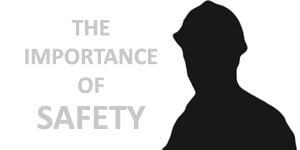 Properties that have been impacted by a fire, flood or other related weather loss, pose extra safety cautions. Wolgast considers it as important, if not more, than you do to keep everyone who enters the site safe. Property Owners, agents, workers, friends and neighbors may come and go during a restoration project, so explicit communication, signage, teamwork, proper personal protective equipment (PPE) and sometimes sanitization stations need to be available to protect site occupants. Wolgast Restoration factors this into our project planning.
Properties that have been impacted by a fire, flood or other related weather loss, pose extra safety cautions. Wolgast considers it as important, if not more, than you do to keep everyone who enters the site safe. Property Owners, agents, workers, friends and neighbors may come and go during a restoration project, so explicit communication, signage, teamwork, proper personal protective equipment (PPE) and sometimes sanitization stations need to be available to protect site occupants. Wolgast Restoration factors this into our project planning.
On any given site, we need to be prepared for a variety of issues that are associated with a loss, such as structural issues, airborne or water contaminants, sharp metal or exposed electrical wires to name a few. Once restoration activity starts, there are additional safety impacts to prevent involving elevated spaces, trip hazards, construction equipment and tools, etc. Our Field Employee-Owners have been OSHA Safety Certified as well as IICRC Certified. Additionally, we have a safety incentive program whereby the monetary pool is funded by completing safety behavior and practices that our Safety Committee has determined will result in increased protection for all. Daily safety planning, meetings, communication, documentation are among these actions. The better the safety behaviors, the better the safety culture and the bigger the pool of money. The money is used to supply staff members with gift certificates for steel toed boots, coats and gloves of their choosing that further protect them from elements on a construction site.
The point of this blog is that you won’t have to worry about further issues on your customer’s property when any loss already creates high stress. And that is important when choosing a Restoration Company. Additionally, being safe speeds up the restoration process, which is good for all of us.

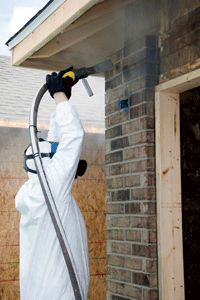 For insurance carriers and building owners alike, risk management should be a coveted aspect of their relationship with an insurance restoration company. There are several means that successful restoration companies contribute to risk management on a project and those are a combination of experience, great customer service, resources, wide coverage area and training/certifications.
For insurance carriers and building owners alike, risk management should be a coveted aspect of their relationship with an insurance restoration company. There are several means that successful restoration companies contribute to risk management on a project and those are a combination of experience, great customer service, resources, wide coverage area and training/certifications.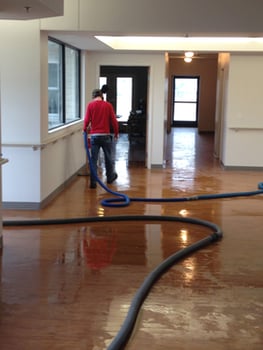 Love them or dislike them, our insurance restoration business model has been molded by Third Party Administrators (TPAs) from the onset of our business plan. This was intentional to simplify our new restoration service division in a complex industry to satisfy all end users, i.e. insurance companies, and policy holders.
Love them or dislike them, our insurance restoration business model has been molded by Third Party Administrators (TPAs) from the onset of our business plan. This was intentional to simplify our new restoration service division in a complex industry to satisfy all end users, i.e. insurance companies, and policy holders. 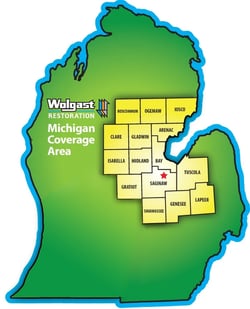 We know the importance of moving quickly to reach the optimal number of policy holders and following through with quality service to keep them happy. As a systemized company, we use a carefully constructed and laid out CAT protocol/process and are prepared to reach a wide variety of property owners in a short amount of time, plus we have the capacity and resources to effectively handle their restoration needs by drawing from our general construction division and its staff when necessary. This system guides us to know the manpower that we will need, the responsibilities of each staff member and the communication necessary to remain responsible, accountable and organized. Also, with two locations in Michigan, one near the center of the state in Freeland and one in the southwest in Kalamazoo, we’re ready to cover a large portion of Michigan to readily help you serve your clients.
We know the importance of moving quickly to reach the optimal number of policy holders and following through with quality service to keep them happy. As a systemized company, we use a carefully constructed and laid out CAT protocol/process and are prepared to reach a wide variety of property owners in a short amount of time, plus we have the capacity and resources to effectively handle their restoration needs by drawing from our general construction division and its staff when necessary. This system guides us to know the manpower that we will need, the responsibilities of each staff member and the communication necessary to remain responsible, accountable and organized. Also, with two locations in Michigan, one near the center of the state in Freeland and one in the southwest in Kalamazoo, we’re ready to cover a large portion of Michigan to readily help you serve your clients.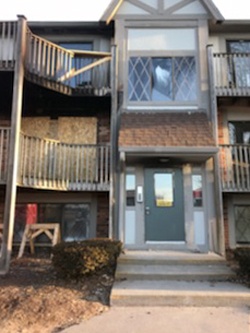 Planning for a disaster is the best way to get through the mayhem faster. However, how does a property owner or manager fully prepare their building for all types of disasters? It can feel like a never ending and expensive task when you try to ward off a storm, flood, fire, vehicle impact, etc. without proper direction. And rather than attempting to avoid all disasters, we recommend that the solution is a Disaster Response Plan (DRP) organized by a professional restoration company. This plan will contain all the information needed to quickly react in an unforeseen incident involving damage to your properties. Each DRP partnership is customized to a client’s specific business needs and building structure.
Planning for a disaster is the best way to get through the mayhem faster. However, how does a property owner or manager fully prepare their building for all types of disasters? It can feel like a never ending and expensive task when you try to ward off a storm, flood, fire, vehicle impact, etc. without proper direction. And rather than attempting to avoid all disasters, we recommend that the solution is a Disaster Response Plan (DRP) organized by a professional restoration company. This plan will contain all the information needed to quickly react in an unforeseen incident involving damage to your properties. Each DRP partnership is customized to a client’s specific business needs and building structure.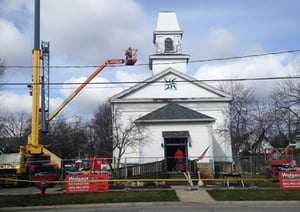 A Property Restoration Contractor is in a unique position with diverse clients and multiple customers on each of their projects. It’s the restoration contractor’s responsibility to find the best solutions that both the policy holder and the insurance adjuster can agree upon.
A Property Restoration Contractor is in a unique position with diverse clients and multiple customers on each of their projects. It’s the restoration contractor’s responsibility to find the best solutions that both the policy holder and the insurance adjuster can agree upon.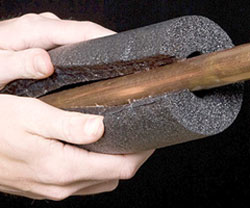 The fluctuating temps we’ve experienced this winter can wreak havoc on our health and our building pipes. Neither are fun to deal with, and many who haven’t experienced bursting pipes are often caught off guard when it happens. The freezing and expanding and contracting action causes pipes to break and/or crack then water floods your building or home creating mayhem. There are simple preventive measures you can take to protect yourself from a leak and we share them with you below.
The fluctuating temps we’ve experienced this winter can wreak havoc on our health and our building pipes. Neither are fun to deal with, and many who haven’t experienced bursting pipes are often caught off guard when it happens. The freezing and expanding and contracting action causes pipes to break and/or crack then water floods your building or home creating mayhem. There are simple preventive measures you can take to protect yourself from a leak and we share them with you below.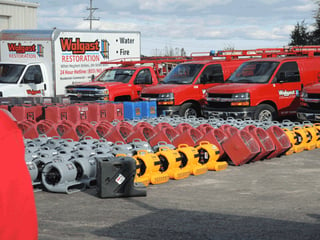 I have searched online to see what industry professionals recommend for restoration companies (RCs) to gain more referrals from insurance agents and adjusters and have learned some interesting and quite varied tips. All seemed to agree, though, that customer retention and relationships were the most important contributing factors to choosing an RC. We have to agree that retention and relationships are most important, too! We would add that trust, great workmanship, and promises met are the means to achieve both these qualities.
I have searched online to see what industry professionals recommend for restoration companies (RCs) to gain more referrals from insurance agents and adjusters and have learned some interesting and quite varied tips. All seemed to agree, though, that customer retention and relationships were the most important contributing factors to choosing an RC. We have to agree that retention and relationships are most important, too! We would add that trust, great workmanship, and promises met are the means to achieve both these qualities. 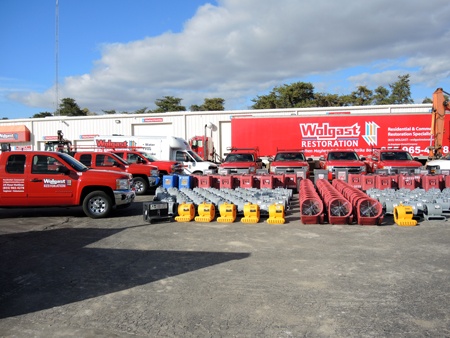 The insurance restoration industry is filled with franchised, nationwide companies. They have come with an established name and a network of connections. However, based on our experience as a general contractor reconstructing structures after they were damaged, we saw there were areas for time savings to get our clients in their buildings or homes faster. Being independent gives us more flexibility to tailor our service to each unique situation. Furthermore, being systemized, employee-owned, and having an experienced construction crew on our team, we provide many benefits to quickly mitigate, clean, and restore your property following a disaster, getting our mutual clients in their building faster and the restoration project closed earlier.
The insurance restoration industry is filled with franchised, nationwide companies. They have come with an established name and a network of connections. However, based on our experience as a general contractor reconstructing structures after they were damaged, we saw there were areas for time savings to get our clients in their buildings or homes faster. Being independent gives us more flexibility to tailor our service to each unique situation. Furthermore, being systemized, employee-owned, and having an experienced construction crew on our team, we provide many benefits to quickly mitigate, clean, and restore your property following a disaster, getting our mutual clients in their building faster and the restoration project closed earlier. In many property restoration situations, content restoring is one of the critical parts of the process. However, not every restoration company or general contractor offers it as a service. Most include mitigation, board-ups, and cleaning, or alternatively just reconstruction, which are also critical parts. For those companies that don’t offer the content processing service, they can outsource it to companies like Wolgast Restoration to remove the items, clean and deodorize them, and store them via an inventory system in a large, climate controlled, secure and dry location.
In many property restoration situations, content restoring is one of the critical parts of the process. However, not every restoration company or general contractor offers it as a service. Most include mitigation, board-ups, and cleaning, or alternatively just reconstruction, which are also critical parts. For those companies that don’t offer the content processing service, they can outsource it to companies like Wolgast Restoration to remove the items, clean and deodorize them, and store them via an inventory system in a large, climate controlled, secure and dry location.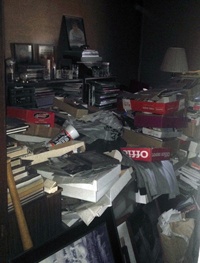 Oftentimes, the bulk of the heartache of a disaster isn’t the loss of the structure, but more so the loss of keepsakes and other valuable items. Using a content processing crew that is trained by IICRC can help to clean and deodorize a wide range of items that may otherwise be mistaken as ruined. We surprise our clients quite often with the rare items that we can restore to pre-disaster condition. For instance, one of our customers had an antler mount on a cream colored base that was stained with smoke and soot and thought to be a total loss, but through our IICRC training and equipment, we were able to restore the base and the antlers to their pre-disaster condition, much to the client’s surprise. Additionally, we were able to salvage a large part of a different customer’s massive baseball collection after a fire in his home. He not only had over 200,000 baseball cards, but also newspaper clippings, books and other valuable memorabilia. Needless-to-say, the customer was concerned about the inventory and keeping track of the items that were most valuable, regardless of salvaging or not. We were able to assess everything, salvage a large portion and satisfactorily establish his comfort with our system to keep his collection intact for his review.
Oftentimes, the bulk of the heartache of a disaster isn’t the loss of the structure, but more so the loss of keepsakes and other valuable items. Using a content processing crew that is trained by IICRC can help to clean and deodorize a wide range of items that may otherwise be mistaken as ruined. We surprise our clients quite often with the rare items that we can restore to pre-disaster condition. For instance, one of our customers had an antler mount on a cream colored base that was stained with smoke and soot and thought to be a total loss, but through our IICRC training and equipment, we were able to restore the base and the antlers to their pre-disaster condition, much to the client’s surprise. Additionally, we were able to salvage a large part of a different customer’s massive baseball collection after a fire in his home. He not only had over 200,000 baseball cards, but also newspaper clippings, books and other valuable memorabilia. Needless-to-say, the customer was concerned about the inventory and keeping track of the items that were most valuable, regardless of salvaging or not. We were able to assess everything, salvage a large portion and satisfactorily establish his comfort with our system to keep his collection intact for his review. 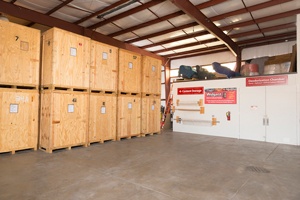 In addition to sanitizing, we keep inventory of all items in our care. We use a barcode tracking system to inventory and process contents, so at any time during our care, we know what items have been cleaned, what items still need to be cleaned, and where an item is in our warehouse (which vault). Additionally, we have adequate storage/vaults to take on a loss of any size and we carefully pack-up all items for storage then keep them secure until it’s time to return to their owner.
In addition to sanitizing, we keep inventory of all items in our care. We use a barcode tracking system to inventory and process contents, so at any time during our care, we know what items have been cleaned, what items still need to be cleaned, and where an item is in our warehouse (which vault). Additionally, we have adequate storage/vaults to take on a loss of any size and we carefully pack-up all items for storage then keep them secure until it’s time to return to their owner.